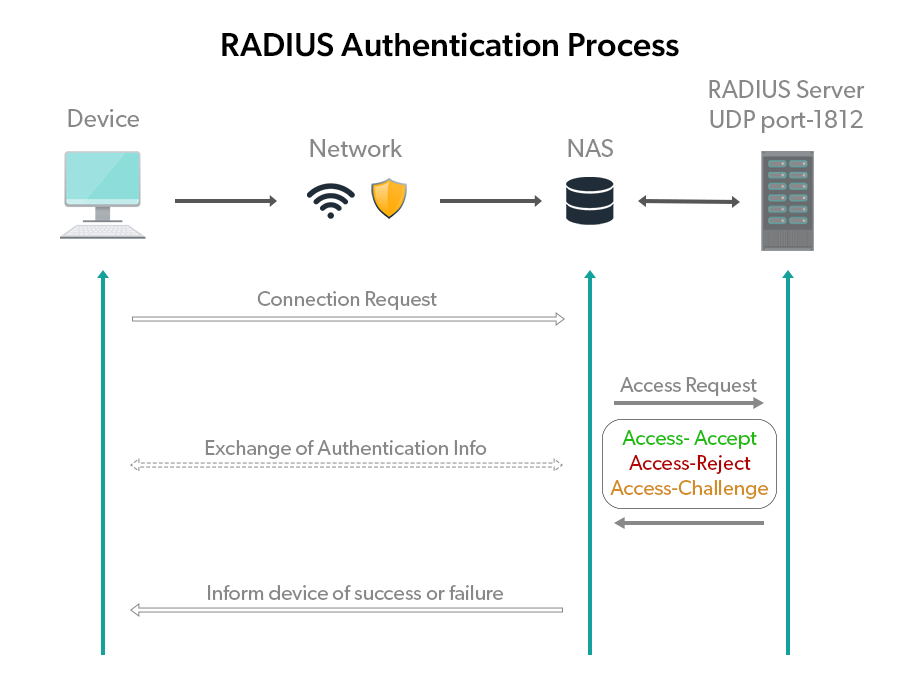Remote Authentication Dial-In User Service (RADIUS) is a networking protocol that provides authentication, authorization, and accounting (AAA) services. These services are commonly used in enterprise environments to control access to network resources and monitor usage. This article provides an overview of RADIUS and how it is used in conjunction with network devices, such as HP switches, to provide AAA services.
What is RADIUS?
RADIUS is a client/server protocol that enables remote access servers to communicate with a central authentication server to authenticate users and authorize their access to network resources. RADIUS servers can also perform accounting functions, such as logging user activity and resource usage.
Authentication
Authentication is the process of verifying a user’s identity. In RADIUS, authentication typically involves a user providing their credentials (e.g. username and password) to a remote access server. The remote access server then forwards the credentials to the RADIUS server for authentication. If the credentials are valid, the RADIUS server sends an Access-Accept message to the remote access server, allowing the user access to the network.
Authorization
Authorization is the process of granting or denying access to network resources based on a user’s identity and the access policies defined by the network administrator. In RADIUS, authorization typically involves the RADIUS server sending an Access-Accept message to the remote access server with a list of authorized services and access privileges for the user.
Accounting
Accounting is the process of logging user activity and resource usage. In RADIUS, accounting typically involves the RADIUS server receiving accounting messages from the remote access server that contain information about the user’s session, including start and stop times, the amount of data transferred, and the resources accessed.\
Using RADIUS with HP switches
HP switches support RADIUS authentication, authorization, and accounting, allowing network administrators to centrally manage user access to network resources. The following sections describe how to set up RADIUS on an HP switch and how to integrate it with a RADIUS server.
Setting up RADIUS on an HP switch
To set up RADIUS on an HP switch, follow these steps:
1. Configure the switch for RADIUS authentication by entering the following commands:
radius-server host <IP address> key <shared secret>
aaa authentication login radius local
The first command specifies the IP address of the RADIUS server and a shared secret used to encrypt communication between the switch and the server. The second command configures the switch to use RADIUS for authentication, falling back to local authentication if the RADIUS server is unavailable.
2. Configure the switch for RADIUS accounting by entering the following commands:radius-server accounting host <IP address> key <shared secret>
aaa accounting system start-stop radius
The first command specifies the IP address of the RADIUS server and a shared secret used to encrypt communication between the switch and the server. The second command configures the switch to use RADIUS for accounting.
3. Configure the switch for RADIUS authorization by entering the following command: aaa authorization network radius if-authenticated
Using Splynx with RADIUS
Splynx is a software platform that provides network operators with tools to manage their networks and subscribers. It includes built-in support for RADIUS authentication, authorization, and accounting, allowing network operators to manage user access to network resources from a central location.
To use Splynx with RADIUS, follow these steps:
- Configure Splynx to authenticate users by entering the following information:
Server IP address: The IP address of the RADIUS server
Shared secret: The shared secret used on the RADIUS server
Authentication protocol: PAP, CHAP, or MS-CHAP
- Configure Splynx to authorize users by defining access policies and privileges based on the user’s identity.
- Configure it to perform accounting functions by setting up accounting policies that specify what information should be logged and how it should be logged.
- Configure the software to communicate with network devices, such as HP switches, by entering the following information:
Device type: HP switch
Device IP address: The IP address of the switch
Device credentials: The username and password used to log in to the switch
- Test the Splynx configuration by attempting to log in to the network with valid credentials. If the configuration is correct, Splynx should authenticate the user, authorize their access to network resources, and log their activity.
Conclusion
RADIUS provides a powerful framework for controlling access to network resources and monitoring usage. HP switches and Splynx both support RADIUS authentication, authorization, and accounting, allowing network administrators and operators to centrally manage user access to network resources. By using RADIUS with HP switches and Splynx, network operators can ensure that only authorized users are able to access network resources and that their usage is tracked and logged for auditing purposes.
Image Credit – JumpCloud












